House Of Frankenstein, The Mummy's Curse (1944)
Directed by: Erle C.Kenton, Leslie Goodwins
Written by: Bernard Schubert, Dwight V. Babcook, Edward T.Lowe, Leon Abrams
Starring: Boris Karloff, Glenn Strange, J. Carroll Naish, John Carradine, Lon Chaney Jnr, Peter Coe, Virginia Christie
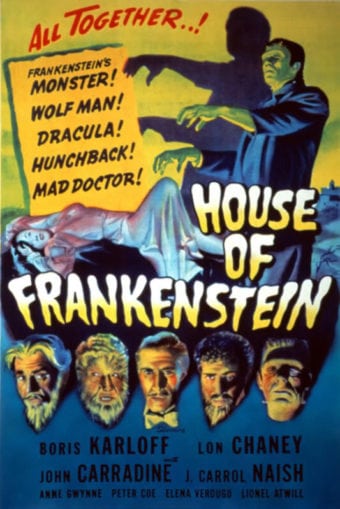
Dr Gustav Niemann is languishing in prison with his hunchbacked assistant Daniel, due to performing experiments similar to those of Dr Frankenstein, most notably putting the brain of a human into the body of a dog. Neimann promises Daniel that he will find him a new body. When lightning destroys the jail wall, they escape and encounter the travelling horror show of Prof Bruno Lampini, whose chief attraction is the skeleton of Count Dracula, replete with stake still through the heart. Daniel kills Lampini so that Niemann can take his place, then they head towards Regalberg where Niemann plans to kill the people who were responsible for putting him in jail. His first weapon is Dracula, whom Neimann resurrects from pulling out the stake, but nearby is an icy cave where both Frankenstein’s Monster and the Wolf Man lie, frozen in ice….
House Of Frankenstein, which packs in three monsters to Frankenstein Meets The Wolf Man’s two- well, it’s actually four if you count Daniel the hunchback as one, which Universal’s very un-politically correct publicity certainly did at the time – is an absurd mess of a film that is also great fun. Consisting more of several short segments than one coherent story, it packs far too much in for its scant running time and actually more than anything else gives the impression of three or four movies cut down and crammed into one single film, with no regard for continuity or sense. Because of this, it also moves at a lightning pace, almost surreal in the way it rushes from one scenario to another. It’s hard to really call it a good film, but I think few would not be entertained by it!
Kurt Siodmak wrote a treatment called The Devil’s Brood which, in addition to featuring Frankenstein’s Monster, Dracula and the Wolf Man, also included Geoffrey Radcliffe the Invisible Man from The Invisible Man Returns [this was planned before The Invisible Man’s Revenge began production], to be again played by Vincent Price, The Mummy, The Captive Wild Woman [a woman who turns into a gorilla, from the film of the same name], The Mad Ghoul [self-explanatory, from the film of the same name], and a gypsy who cures Talbot! Such a packed tale would have required a much bigger budget than Universal were willing to provide, so Edward T. Lowe was hired to drastically simplify Siodmak’s story into a more manageable screenplay. Bela Lugosi was intended to return as Dracula but other commitments prevented that, but Boris Karloff was able to return to the series in style, albeit not as the Monster because he found the role of the evil scientist Niemann more interesting, plus the Monster didn’t do much in the film anyway. Erle C. Kenton returned from The Ghost Of Frankenstein to direct. The film did reasonable business but the feeling of desperation about it showed that the series was drawing to a close.
Make no mistake, House Of Frankenstein is a long way from Frankenstein or Bride Of Frankenstein in quality. The film just does not hang together at all, and yet, whenever I watch what is without a doubt the silliest in the series yet, I never fail to enjoy it. It begins with Niemann and Daniel the hunchback in jail and – hey presto – lightning conveniently smashes one of the walls and the two villains are free! It seems we are in for a Son Of Frankenstein-type revenge story with Niemann out to get the folks who caused him to be put away, but then he revives Dracula, and for about twenty minutes we are watching a Dracula film, with Dracula killing one of Niemann’s targets and going after his grand daughter-in-law Rita. There’s an interesting moment where the hypnotised Rita gazes into Dracula’s ring saying “I see people that are dead, and yet alive, alive, and yet dead”, and this part ends with a fine chase involving Dracula’s carriage and three policemen on horse, climaxing in Dracula’s death. And that’s it, the vampire, nor Rita or her boyfriend, playing no part in the remaining two thirds of the movie, which could have existed quite well without Dracula having been in it at all.
The pace now slows just a little to bring in a love triangle, though scenes still give the impression of having been cut to the bone and things still seem very rushed. Daniel saves a pretty gypsy lass called Ilonka and immediately falls in love. She is happy to flirt with him until she sees his back and cries “you’re ugly. Ugly”! Never mind, Talbot is around, and the strumpet quickly turns her attention to him. It seems that you are supposed to actually like Ilonka and feel for her romance with Talbot, while Daniel is treated like shit by both everyone in the film and the script – though at least he does get his own back on Niemann in a rather gruesome way, breaking his back in a way that we actually see his body bent back in silhouette. It’s probably the most graphic death of the series, and I’m surprised it wasn’t cut. The Wolf Man story proceeds in the usual manner though doesn’t quite end the way you would expect, while, predictably, the Monster doesn’t come to life until the end, only to walk into the same quicksand set that Kharis had done earlier that year. Actor Glenn Strange did his own stunts as the Monster and nearly got burnt alive walking on burning tumbleweeds. Interestingly, virtually everyone ends up dead, giving the film a nihilistic tone that provides it with a bit of strength it otherwise wouldn’t really have.
All this is done with a certain amount of style, with the film looking good throughout despite the sparse, limited sets; cinematographer George Robinson is one of the heroes of the film. The many nocturnal scenes are obviously day-for-night but have a real dark fairy-tale look to them, with much thought having gone into composition. Matters are held back continually though by various flaws. The overly episodic script gives the feeling that the writer had not seen the previous few films, as it now splits Visaria [changed from Visaria] aka the village of Frankenstein, into two separate villages, Visaria and Frankenstein. Dracula’s skeleton was supposedly taken from his castle. Other glaring faults include Talbot having totally dry clothes when thawed out of the ice and having human hands when he is the Wolf Man. Niemann says he wants to thaw out the Wolf Man and the Monster so they can help him find Frankenstein’s notes, Huh?! What bloody use would the Monster be? And does Niemann really intend to give one victim’s brain to the Monster, the Monster’s brain to Talbot, and the Wolf Man’s brain to another victim? Sounds ridiculously complicated.
One cannot complain about the performances, though Glenn Strange has so little to do as the Monster it’s hard to critique his acting, and in any case until the end the Monster’s face is actually a mask of Lon Chaney as the Monster [from The Ghost Of Frankenstein]. Boris Karloff is delicious pure evil as Niemann, a cruel, murderous and deceitful villain who seemingly has no redeeming features whatsoever. For once Karloff doesn’t try to give him some humanity, to make us like him just a little, and it works. I really like John Carradine as Dracula, with his aristocratic air and elegance; he’s actually the closest of all the Universal Draculas to the way Bram Stoker wrote and described him. J. Carrol Naish is very sympathetic as poor Daniel; he’s one of the most tragic characters of the series. Hans J.Salter wrote an original score incorporating his previous themes for the three monsters and it’s a really good effort, with a particularly exciting piece for the Dracula chase and a really tragic ‘love’ theme. Paul Dessau supposedly wrote some of the score but it all sounds like Salter to me, though maybe he was responsible for the gypsy dance? Overall, House Of Frankenstein is far better than it should be; it seems to combine carelessness and care in roughly equal measures. The major shame is that Siodmak was not allowed to adapt his original conception and it was given to someone else, because it is the shoddy script above all else that lets it down.
The Southern Engineering Company is trying to drain the swamp of Cajun Country for the public good. but their efforts are being hampered by the superstitions of the workers, who believe the area to be haunted by the Mummy and his bride Ananka. Two representatives of the Scripps Museum, Dr. James Halsey and Dr. Ilzor Zandaab, arrive to search for the missing mummies, buried in the swamp years earlier, and here that a workman has been murdered. Zandaab is actually a High Priest of Arkham, and goes to find his disciple Raghheb, who had killed the worker for finding Kharis and has taken the immobile monster to a deserted monastery with plans to revive him. Meanwhile the mummy of Ananka rises from the swamp and, immersing herself in a pool, turns into a young woman…..
I doubt that event the greatest fan of old horror movies could call The Mummy’s Curse a good film. It’s a truly sloppy production that gives the impression it was made up as they went along and makes no sense whatsoever. It is by far the most ridiculous of the Mummy series. Paradoxically, it also contains one the best scenes in Universal horror ever, a scene which is so good it would even be the highlight of a good film. Only just about reaching 60 mins in length, it’s also a very fast paced, tight movie in the manner of The Mummy’s Tomb, which means that, while you may be laughing at its absurdity, or just sitting there gobsmacked at what we are being asked to swallow, there’s no chance of you getting bored, and there is certainly something to be said for attempting some slightly more original twists on the tried and tested elements of the Mummy series. As with The Mummy’s Ghost, there are some interesting concepts in it, but even less is done with them, almost making the film a wasted opportunity.
The Mummy’s Curse was written by people who had not contributed to any previous Mummy adventure, and I wonder if they had actually even seen any of them. Ted Richmond, who usually produced films, wrote the original story, which three other writers turned into a screenplay, though I wonder if any of them were paying attention to the work of the others? Director Leslie Goodwins was another ‘B’ director and the cast of this one was mostly undistinguished, though two minor silent film stars William Farnum and Charlie Stevens had small appearances and female star Virginia Christie later achieved fame in the 1960’s when she started her 21-year stint as the matronly Mrs. Olso, who always had comforting words for young married couples while pouring Folgers Coffee In a lengthy series of TV ads. Curse was an extremely rushed production that just managed to hit cinemas the same year as Ghost. Sequels made the same year rarely do well at the box office, with the public usually suspicious of something that appears to have been churned out quickly just for the money, and the disappointing box office receipt signaled the end of the Mummy series, though how they could have carried the story from here God only knows!
Now think about this. Hand was made and set in 1940. Tomb takes place thirty years later. Ghost four years after that, and Curse twenty-five years after Ghost. Therefore, if my admittedly poor maths is correct, Curse is set 1999! Even more absurdly, the swamp into which Kharis and his wrinkled bride has now been relocated from New England to Louisiana! Now I am certainly no sticker for exact consistency, but this is just ludicrous! Did the writers really think that no one would notice? Anyway, we are now in Cajun country, except that only a couple of people sound Cajun. Despite this, the characters are as cliched as you could imagine, including the most stereotypical black man you could imagine, a simple-minded fool called Goobie, given to pronouncements like; “The Mummy’s on the loose and he’s dancin’ with the Devil”, which he actually says twice. Then again, the dialogue is often funny for the wrong reasons. Our ‘hero’, Dr James Halsey, when Ananka wants to help him in his research and has been reading his notes, shows a nice line in sexism in replying; “Aw, it’s just a lot of technical data you probably wouldn’t understand”.
After introducing the setting with a musical number by a woman who sounds like a man and a stupid scene where our two men from the Scripps museum, wanting to investigate the rumours of a Mummy, try the ‘curse’ line before then saying they have a permit to look for the Mummy, the film wastes little time in getting to the action. Kharis is brought to life quickly, replete with altered detail regarding the tana leaves; this time it requires three to keep him alive and nine to make him walk. His first killing is the silliest of the whole series; the victim, the sacristan of the ruined monastery where the two villainous Egyptians [are there any other in these films, and why does one sound Italian?] just stands there as the slow-moving Mummy, who seems to struggle with just walking, moves towards him. Saying that though, there is an even more stupid bit near the end where the Mummy is trying to kill someone who is behind a door. Suddenly displaying huge strength, he rips away enough bars to enable himself to climb through the gap, yet still feels a need to smash down the door.
Despite utilising that darned flashback to ancient Eygpt again, Curse does work okay for the first third, which ends with that great scene I alluded to earlier. Caked in dried clay, Ananka [who displays hardly any of the wrinkles she had at the end of Ghost] struggles to break loose from her burial place and then staggers blindly through the woods, her head turned upward to the blazing sun. As she opens her eyes she gazes at her hands, then descends slowly into a pool to cleanse herself. This scene is startlingly effective, and Christie’s reactions are sad and even oddly realistic, while her actions are slightly speeded up in some shots, resulting in a jerky quality. It’s creepy, almost surreal and oddly beautiful. Sadly after this the film turns rather poor and never recovers, consisting of little more than the Mummy chasing Ananka, who just doesn’t seem to have been worked out as a character at all. She has amnesia, but suddenly talks about ancient Egypt [though with another Italian-sounding accent] at times, yet flees from her bandaged lover, though if you think about it she’s also not really Ananka at all, being really another woman possessed by her, if you refer back to the events of Ghost. Nothing is thought through though in this film which ends lamely with all the bad guys turning on each other and Kharis bringing the house down.
Kharis really looks pitiful in this film. He’s barely able to stand up straight, instead lurching forward and sometimes looking like he’s about to topple over. I wonder if Lon Chaney deliberately overdid it to get through the Universal executives how much he hated the role? The best performance in the film is actually by Peter Coe, quietly sinister as Zandaab and doing quite a convincing Egyptian accent with it. Virginia Christie, who does some wonderfully theatrical faints, and Kay Harding are amongst the prettiest of Universal’s starlets but Harding is noticeably poor and Christie is not really up to the role of Ananka which is potentially quite complex. The score consists entirely of stock music, some of it by the great Dmitri Tiomkin, though it’s not too well used until the second half where the familiar Hans J.Salter and Frank Skinner material comes in, the typical Son Of Frankenstein– derived stalking music helping to provide pace and doing its best to ramp up the excitement. Despite its many, many problems, I prefer the more offbeat Curse to the more widely praised Hand. It’s just so bizarre and dumb it’s almost surreal.

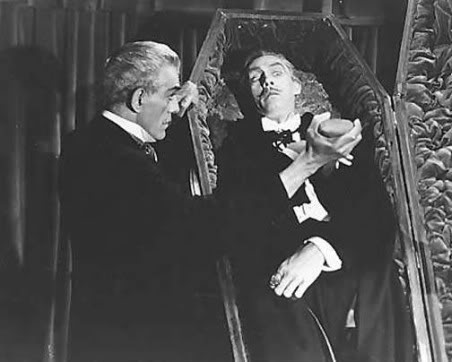
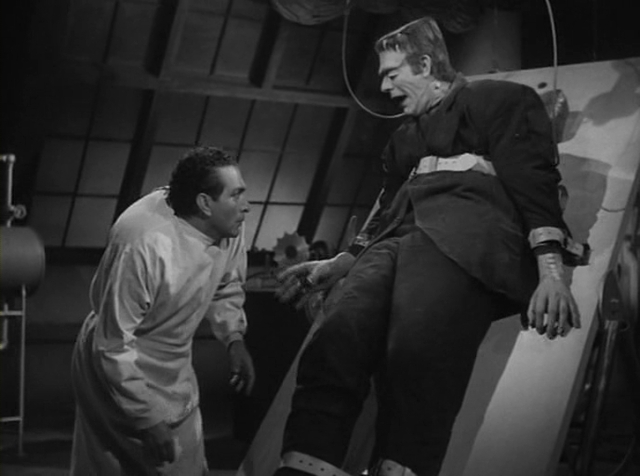


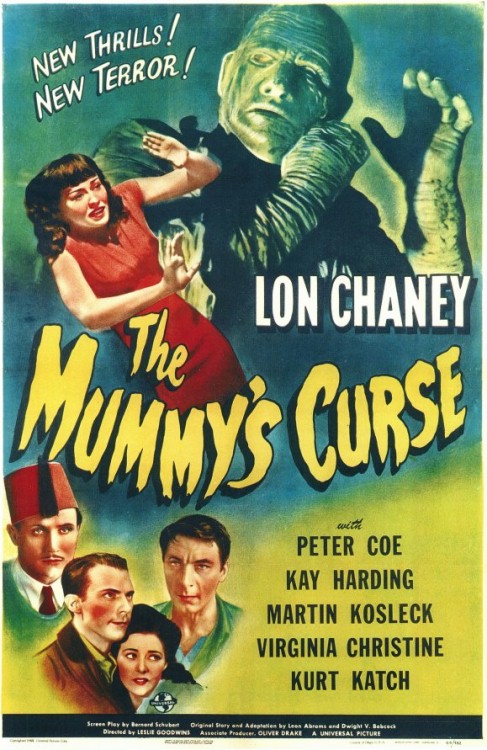
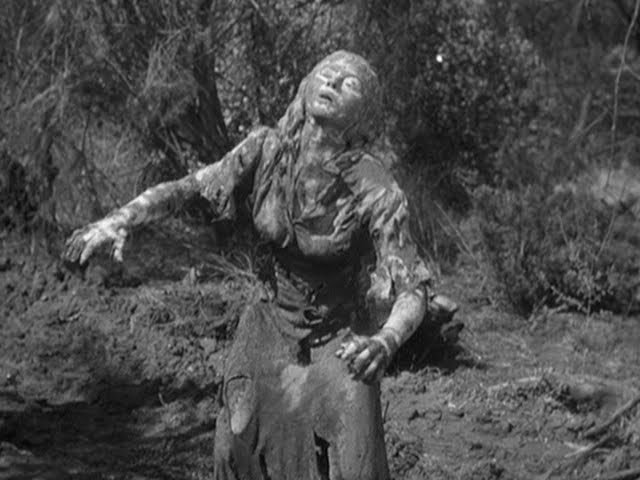




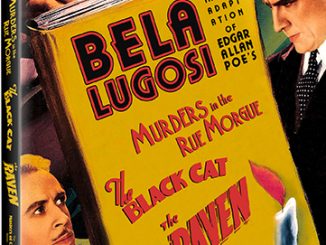
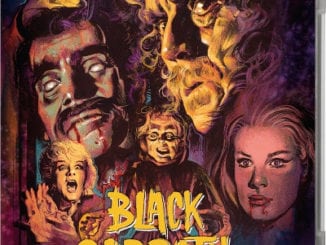
Be the first to comment